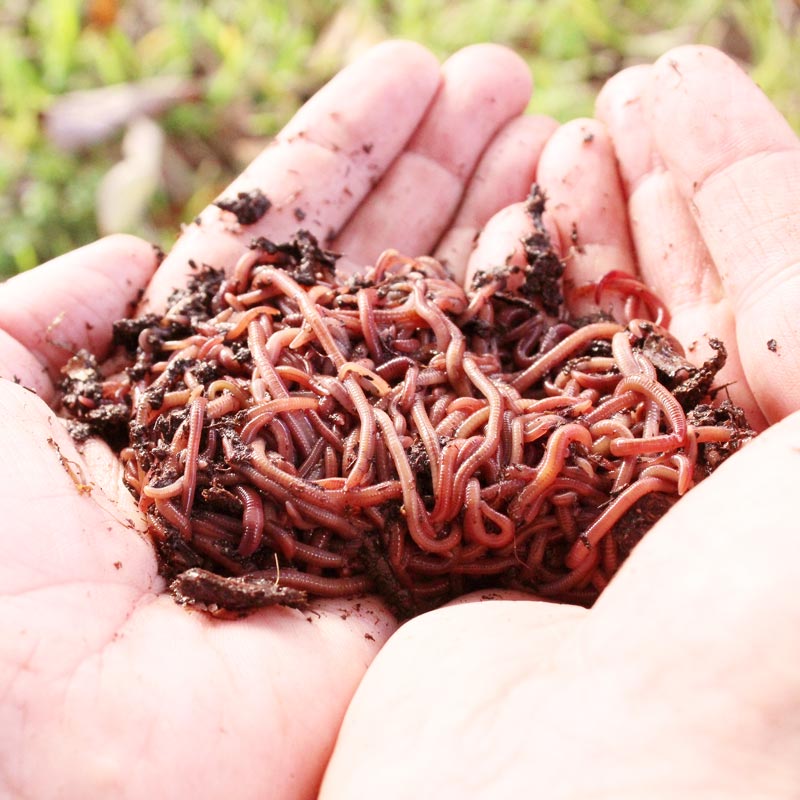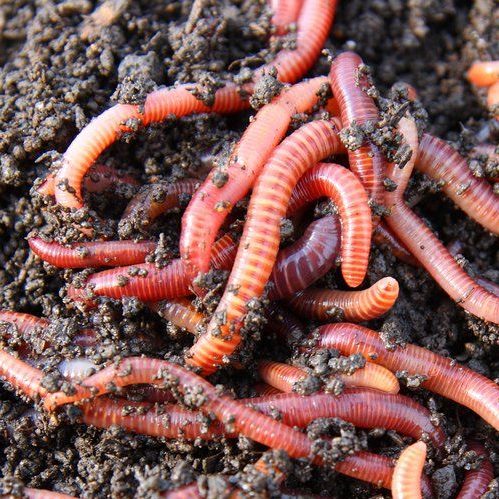Lake Hickory Bait: The Ultimate Spot for All Your Angling Needs
Lake Hickory Bait: The Ultimate Spot for All Your Angling Needs
Blog Article
Red Wigglers 101: Every Little Thing You Need to Know for Thriving Gardens
Red wigglers, or Eisenia fetida, play a critical role in sustainable gardening methods, offering as reliable decomposers that transform natural waste into beneficial vermicompost. Recognizing their habitat, nutritional choices, and the myriad benefits they offer can transform your gardening method.
Recognizing Red Wigglers

Red wigglers prosper in environments rich in organic material and moisture. Red Wiggler Express. They possess an unique digestion system that allows them to process food scraps quickly, excreting castings that are packed with essential nutrients such as nitrogen, phosphorus, and potassium. These castings boost dirt framework, enhance water retention, and foster advantageous microbial task, every one of which add to durable plant health and wellness
In addition, red wigglers can endure in diverse conditions, making them versatile to numerous horticulture practices, consisting of interior and exterior composting systems. Their ability to eat big quantities of natural waste everyday settings them as useful allies for both home garden enthusiasts and industrial growers. By including red wigglers right into horticulture initiatives, one can considerably enhance dirt fertility and support lasting horticulture techniques.
Perfect Environment for Red Wigglers
Producing an optimal environment for red wigglers is important for optimizing their composting capacities and total wellness. Red wigglers grow in damp, dark, and well-aerated environments, which very closely resemble their natural settings in fallen leave litter and decaying raw material. An ideal environment needs to provide a temperature level array between 55 ° F and 77 ° F(13 ° C to 25 ° C), as severe temperatures can stress or harm the worms.
The bedding product, such as shredded paper, cardboard, or coconut coir, need to be maintained damp but not extremely wet, as too much moisture can cause anaerobic conditions damaging to worm health and wellness. In addition, a pH level in between 6.0 and 7.5 is excellent, making certain a well balanced environment.
Correct oygenation is equally vital; it enables oxygen blood circulation and stops the accumulation of unsafe gases. A container or bin created for vermicomposting must have drain holes to eliminate excess moisture and advertise air movement. Normal monitoring of these problems is necessary for maintaining a thriving red wiggler populace, ultimately improving their efficiency in damaging down natural waste and enhancing yard soil.
Dietary Requirements and Preferences

Red wigglers display specific choices; they are particularly fond of softer, breaking down products over harder or more coarse compounds. It is important to prevent feeding them citrus peels, onion, and garlic in huge quantities, as these can be unsafe. In addition, meat, dairy products, and oily foods need to be excluded, as they can bring in parasites and create undesirable smells.
(Lake Rhodhiss Bait)Eco-friendly products, such as veggie scraps, supply nitrogen, while brown products, like cardboard and dried leaves, supply carbon. By catering to their dietary demands, gardeners can foster a growing populace of red wigglers in their compost systems.
Benefits of Using Red Wigglers
The remarkable advantages of using red wigglers in gardening extend far past their role in composting. These versatile organisms add dramatically to soil health, enhancing nutrient accessibility and advertising microbial activity. By freshening the soil as they burrow, red wigglers improve water drainage and origin infiltration, developing an optimal environment for plant growth.
Additionally, red wigglers are reliable recyclers of natural waste, transforming it into nutrient-rich spreadings that function as a superb all-natural plant food. These spreadings consist of useful microbes and vital nutrients, such as nitrogen, phosphorus, and potassium, which are crucial for plant development. The slow launch of nutrients from worm spreadings makes certain a stable supply, reducing the threat of nutrient leaching and advertising lasting gardening practices.
Making use of red wigglers promotes a much more lasting horticulture method by minimizing reliance on chemical plant foods and advertising a closed-loop system, where waste is changed into important resources. In general, incorporating red wigglers into horticulture techniques provides a wide variety of environmental and agricultural advantages.
(Hickory NC Worms For Sale)
Composting With Red Wigglers

To initiate a successful vermicomposting system, pick a suitable container with proper ventilation and water drainage. The excellent atmosphere for red wigglers includes a wet, dark setting with temperature levels in between 55 ° F and 77 ° F. Begin by layering shredded paper, cardboard, and food scraps, guaranteeing a balanced mix of carbon and nitrogen-rich materials.
Red wigglers thrive on vegetable peels, fruit scraps, coffee premises, and eggshells, while staying clear of meat, milk, and oily foods that can bring in insects. Consistently keep track of wetness levels; the bed linen needs to perspire but not soaked. Harvest worm castings every couple of months by separating the worms from the compost, which can then be used directly in yards or kept for later usage.
Executing vermicomposting not just reduces landfill waste but additionally enriches yard soil, promoting healthy plant growth and lasting horticulture methods. Accept this environment-friendly approach to boost your horticulture ventures.
Conclusion
In recap, red wigglers are crucial informative post organisms for boosting yard performance through efficient composting. Their specific habitat needs, nutritional choices, and considerable advantages add to sustainable gardening methods. By utilizing red wigglers, garden enthusiasts can considerably boost soil quality and nutrient availability, cultivating healthier plant development. Accepting the method of vermicomposting not only supports waste decrease but likewise advertises an ecological equilibrium within yard communities, inevitably resulting in flourishing and durable gardens.
Report this page